| Chinatown | |||||||
|---|---|---|---|---|---|---|---|
 Sydney Chinatown | |||||||
| Chinese | 唐人街 | ||||||
| |||||||
| Alternative Chinese name | |||||||
| Traditional Chinese | 中國城 | ||||||
| Simplified Chinese | 中国城 | ||||||
| |||||||
| Second alternative Chinese name | |||||||
| Traditional Chinese | 華埠 | ||||||
| Simplified Chinese | 华埠 | ||||||
| |||||||
| Chinatowns |
|---|
This article discusses Chinatowns in Oceania .
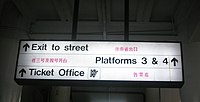
| Chinatown | |||||||
|---|---|---|---|---|---|---|---|
 Sydney Chinatown | |||||||
| Chinese | 唐人街 | ||||||
| |||||||
| Alternative Chinese name | |||||||
| Traditional Chinese | 中國城 | ||||||
| Simplified Chinese | 中国城 | ||||||
| |||||||
| Second alternative Chinese name | |||||||
| Traditional Chinese | 華埠 | ||||||
| Simplified Chinese | 华埠 | ||||||
| |||||||
| Chinatowns |
|---|
This article discusses Chinatowns in Oceania .

Given its proximity to the Asian continent, Australia has had, and continues to witness, a massive immigration of Chinese and other Asians. As with Canada, the majority of ethnic Chinese immigrants to Australia are from Hong Kong and Canton. Chinese from various places of mainland China, Macau, Taiwan, Korea, Southeast Asia —especially Vietnam, Laos, Cambodia, Philippines, and Indonesia —and Latin America also settled Australia.
Many early Chinese from the Guangdong and Fujian provinces of China immigrated to Australia during the gold rush era. They were mainly Chinese of Taishanese, Cantonese, Hokkien, and Hakka origin. As in North America, the Chinese faced massive institutionalized discrimination, and Asian immigration was restricted by the White Australia Policy in the late 1880s. It was repealed by the 1970s under multiculturalist policies, which in turn ushered in a new wave of Asian immigration, particularly from Hong Kong and the People's Republic of China, and giving rise to several Australian Chinatown communities.
Australia has numerous contemporary city Chinatowns such as Chinatown, Gold Coast, and historic frontier and rural Chinatowns.
The Chinatown, called Quartier Chinois, in French Polynesia is located in Papeete on Tahiti island. Its overseas Chinese also migrated to France. Starting in 1865, early Chinese migrants of the Hakka variety arrived in French Polynesia to work on the island cotton plantations. Many of these migrants were exploited. The ethnic Chinese population has been declining in French Polynesia. [1]
Hagåtña (Agaña) has a unique Chinatown in Guam, a United States territory. The first Chinese immigrated during the Spanish territorial period, and their first descendants can speak Spanish. The Japanese, Koreans, Thais, Vietnamese, Filipinos, Chamorros, and other Pacific Islanders also settled the place, making it a multi-Asian district. These Asians also migrated to Hawaii or mainland United States.
The only Nauruan Chinatown is located at the Aiue Boulevard in the Aiwo District.
Noumea has the only Chinatown, or Quartier Chinois, in New Caledonia. It has been settled by ethnic Vietnamese, Chinese Vietnamese, and Chinese Indonesian refugees. These Chinese also settled in France.

There is an overall strong Southeast Asian presence in many of the country's urban areas. Many Taiwanese and Cantonese settlers from Hong Kong also live permanently in New Zealand, and in recent years New Zealand universities have been attractive to overseas students from Southeast Asia. Chinatowns existed on Greys Avenue in Auckland and Haining Street in Wellington up until the 1970s, and there is a growing community in both Christchurch and Dunedin.
The first early Chinese immigrants to New Zealand are Cantonese from Guangdong Province, and they went here for the Central Otago goldrush of 1861. The former Chinese gold-mining settlement near the present town of Lawrence is being restored as an open-air museum, as has a similar former settlement at Arrowtown. Because of this influx of Cantonese during the 1860s, there is a strong Chinese presence in Dunedin, which has the country's only traditional Chinese Garden. Recent mayor from 2004 to 2010, Peter Chin, is of Chinese descent. During the late 19th century and early 20th century, the area between Rattray Street and Stafford Street at the southern end of the city's CBD had the highest concentration of Chinese businesses in the country, notably Choie (Charles) Sew Hoy's importing company.
In the 1880s, openly sinophobic political ideology, especially in the heavily Chinese city of Dunedin, [2] resulted in the New Zealand head tax, also known as the 'Poll Tax', aimed specifically at Chinese migrants. Racist violence towards Chinese people in New Zealand followed, such as the tragic murder of Joe Kum Yung by white supremacist Lionel Kerry. This attack occurred in Haining Street in Te Aro, Wellington, on 24 September 1905, in the centre of what once was a significant Chinatown. [3]
Though Dunedin has no focussed Chinatown area per se, a large proportion of the businesses in northern George Street cater specifically for the large Eastern and Southeast Asian community centred on this part of the city.
Many Taiwanese and Cantonese settlers from Hong Kong also live permanently in New Zealand, and in recent years New Zealand universities have been attractive to overseas students from Southeast Asia. Other groups of Chinese travelled from South Korea, South Africa, Australia, Latin America, and other Pacific Islands. Korean, Thai, Vietnamese, and Filipino culture are also prevalent in New Zealand's Chinatowns, making them multi-Asian places.
In 2002, the New Zealand Government made a public apology to the Chinese for the poll tax that had been levied on their forefathers a century ago. [4]
Saipan, in the Northern Mariana Islands has a residential district known as "Chinatown". However, very few Chinese actually live there and most of the small groceries in the area are actually run by Koreans.
Several old Chinatowns dot the landscape of Papua New Guinea. The Chinatown of Rabaul is among the oldest in the nation. There is also a Chinatown in the capital city of Port Moresby. Many ethnic Chinese have migrated to Australia.
There is an active Chinatown in the city of Honiara on the Solomon Islands. It was badly damaged in rioting in April 2006, following the election of Snyder Rini as Prime Minister.
Vanuatu has a small Chinatown (Quartier Chinois) on Rue Carnot in Port Vila. Its population includes ethnic Vietnamese and ethnic Chinese residents.

A Chinatown is an ethnic enclave of Chinese people located outside Greater China, most often in an urban setting. Areas known as "Chinatown" exist throughout the world, including Europe, Asia, Africa, Oceania, and the Americas.

Overseas Chinese refers to people of Chinese birth or ethnicity who reside outside Mainland China, Hong Kong, Macau, and Taiwan. As of 2011, there were over 40.3 million overseas Chinese.

Manhattan's Chinatown is a neighborhood in Lower Manhattan, New York City, bordering the Lower East Side to its east, Little Italy to its north, Civic Center to its south, and Tribeca to its west. With an estimated population of 90,000 to 100,000 people, Chinatown is home to the highest concentration of Chinese people in the Western Hemisphere. Manhattan's Chinatown is also one of the oldest Chinese ethnic enclaves. The Manhattan Chinatown is one of nine Chinatown neighborhoods in New York City, as well as one of twelve in the New York metropolitan area, which contains the largest ethnic Chinese population outside of Asia, comprising an estimated 893,697 uniracial individuals as of 2017.

Chinatowns in Asia are widespread with a large concentration of overseas Chinese in East Asia and Southeast Asia and ethnic Chinese whose ancestors came from southern China—particularly the provinces of Guangdong, Fujian, and Hainan—and settled in countries such as Brunei, Cambodia, East Timor, Indonesia, India, Laos, Malaysia, Myanmar, the Philippines, Singapore, Sri Lanka, Thailand, Vietnam, Japan and Korea centuries ago—starting as early as the Tang dynasty, but mostly notably in the 17th through the 19th centuries, and well into the 20th century. Today the Chinese diaspora in Asia is largely concentrated in Southeast Asia however the legacy of the once widespread overseas Chinese communities in Asia is evident in the many Chinatowns that are found across East, South and Southeast Asia.

Urban Chinatowns exist in several major European cities. There is a Chinatown in London, England, as well as major Chinatowns in Manchester, Birmingham, Newcastle and Liverpool. In Paris there are two Chinatowns: one where many Vietnamese – specifically ethnic Chinese refugees from Vietnam – have settled in the Quartier chinois in the 13th arrondissement of Paris which is Europe's largest Chinatown, and the other in Belleville in the northeast of Paris. Berlin, Germany has two Chinatowns, one in the East and one in the West. Antwerp, Belgium also has an upstart Chinese community.

This article discusses Chinatowns in Africa. There are least three major Chinatowns in Africa.

Cantonese is a language within the Chinese (Sinitic) branch of the Sino-Tibetan languages originating from the city of Guangzhou and its surrounding area in Southeastern China. It is the traditional prestige variety of the Yue Chinese dialect group, which has over 80 million native speakers. While the term Cantonese specifically refers to the prestige variety, it is often used to refer to the entire Yue subgroup of Chinese, including related but largely mutually unintelligible languages and dialects such as Taishanese.

The Chinatown neighborhood in Oakland, California(Chinese: 屋崙華埠), is traditionally Chinese which reflects Oakland's diverse Chinese American, and more broadly Asian American community. It is frequently referred to as "Oakland Chinatown" in order to distinguish it from nearby San Francisco's Chinatown. It lies at an elevation of 39 feet.

Chinese Australians are Australians of Chinese ancestry. Chinese Australians are one of the largest groups within the global Chinese diaspora, and are the largest Asian Australian community. Per capita, Australia has more people of Chinese ancestry than any country outside Asia. As a whole, Australian residents identifying themselves as having Chinese ancestry made up 5.5% of Australia's population at the 2021 census.

Chinatown in Montreal is located in the area of De la Gauchetière Street in Montreal. The neighbourhood contains many Asian restaurants, food markets, and convenience stores as well being home to many of Montreal's East Asian community centres, such as the Montreal Chinese Hospital and the Montreal Chinese Community and Cultural Center.

Chinese New Zealanders or Sino-New Zealanders are New Zealanders of Chinese ancestry. The largest subset of Asian New Zealanders, many of the Chinese immigrants came from Mainland China, Hong Kong, Taiwan, or other countries that have large populations of Chinese diaspora. Today's Chinese New Zealand group is composed of diasporic communities from Indonesia, Malaysia, Cambodia, Vietnam and Singapore. As of 2018, Chinese New Zealanders account for 4.9% of the population of New Zealand, and are the largest Asian ethnic group in New Zealand, accounting for 36.3% of Asian New Zealanders.
The Chinese diaspora in France consists of people of Chinese ancestry who were born in or immigrated to France. The ethnic Chinese population in France is estimated to be about 600,000-700,000, making it the largest overseas Chinese community in Europe.
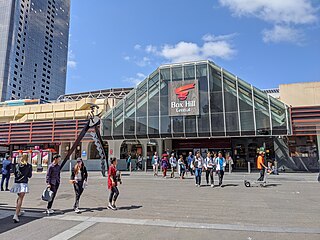
An ethnoburb is a suburban residential and business area with a notable cluster of a particular ethnic minority population. Although the group may not constitute the majority within the region, it is a significant amount of the population. That can greatly influence the social geography within the area because of cultural and religious traditional values exhibited. Ethnoburbs allow for ethnic minority groups to maintain their individual identity, but that may also restrict their ability to fully assimilate into mainstream culture and society.
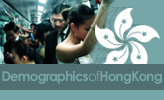
Hongkongers, also known as Hong Kongers, Hongkongian, Hong Kongese, Hongkongese, Hong Kong citizens and Hong Kong people, are demonyms that typically refers to residents of the territory of Hong Kong; although may also refer to others who were born and/or raised in the territory.

Chinatowns in Australia is a term used to describe major Chinese ethnic enclaves in Australia, especially those that claim to retain a strong Chinese cultural identity and a strong relationship with China. Chinatowns exist in most Australian states and territories, especially in the highly-populous and cosmopolitan capital cities but also in rural areas. Many large present-day Chinatowns in Australia have developed out of smaller historical Chinese settlements in Australia dating back to the 19th century. Chinese people first immigrated to Australia in large waves in the midst of the Australian gold rushes. Many of these people subsequently chose to return to China or were forcefully deported from Australia. The first known Chinese Australian was John Shying, who immigrated to Australia in 1818.
Asian diasporas in France consist of foreign residents and French citizens originating from Asian countries living in France. French citizens of Asian descent primarily have ancestry from the former French colonies of Indochina, as well as China or Turkey. Other Asian ethnic groups found in France include other West Asians, South Asians, Japanese, and Koreans.

The Quartier asiatique, also called Triangle de Choisy or Petite Asie is the largest commercial and cultural center for the Asian community of Paris. It is located in the southeast of the 13th arrondissement in an area that contains many high-rise apartment buildings. Despite its status as a "Chinatown", the neighborhood also contains significant Vietnamese, Laotian and Cambodian populations.
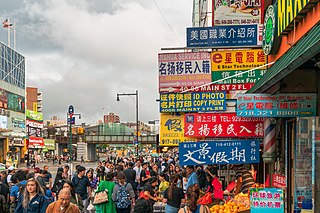
There are multiple Chinatowns in the borough of Queens in New York City. The original Queens Chinatown emerged in Flushing, initially as a satellite of the original Manhattan Chinatown, before evolving its own identity, surpassing in scale the original Manhattan Chinatown, and subsequently, in turn, spawning its own satellite Chinatowns in Elmhurst, Corona, and eastern Queens.
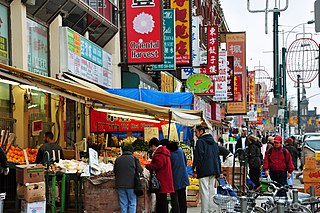
The Chinese Canadian community in the Greater Toronto Area was first established around 1877, with an initial population of two laundry owners. While the Chinese Canadian population was initially small in size, it dramatically grew beginning in the late 1960s due to changes in immigration law and political issues in Hong Kong. Additional immigration from Southeast Asia in the aftermath of the Vietnam War and related conflicts and a late 20th century wave of Hong Kong immigration led to the further development of Chinese ethnic enclaves in the Greater Toronto Area. The Chinese established many large shopping centres in suburban areas catering to their ethnic group. There are 679,725 Chinese in the Greater Toronto Area as of the 2021 census, second only to New York City for largest Chinese community in North America.
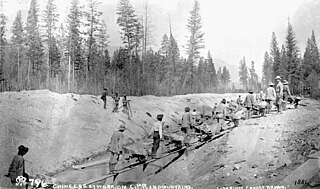
East Asian Canadians are Canadians who were either born in or can trace their ancestry to East Asia. The term East Asian Canadian is a subgroup of Asian Canadians. According to Statistics Canada, East Asian Canadians are considered visible minorities and can be further divided by ethnicity and/or nationality, such as Chinese Canadian, Hong Kong Canadian, Japanese Canadian, Korean Canadian, Mongolian Canadian, Taiwanese Canadian, or Tibetan Canadian, as seen on demi-decadal census data.